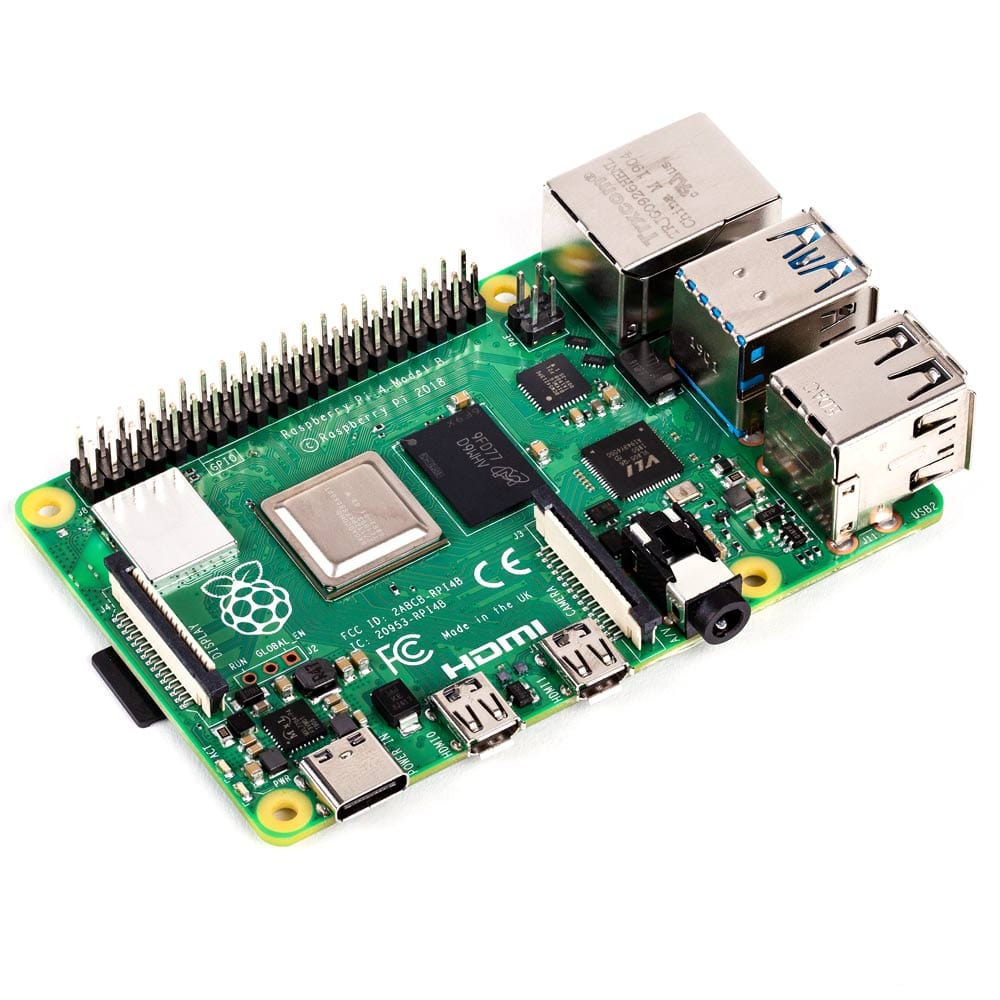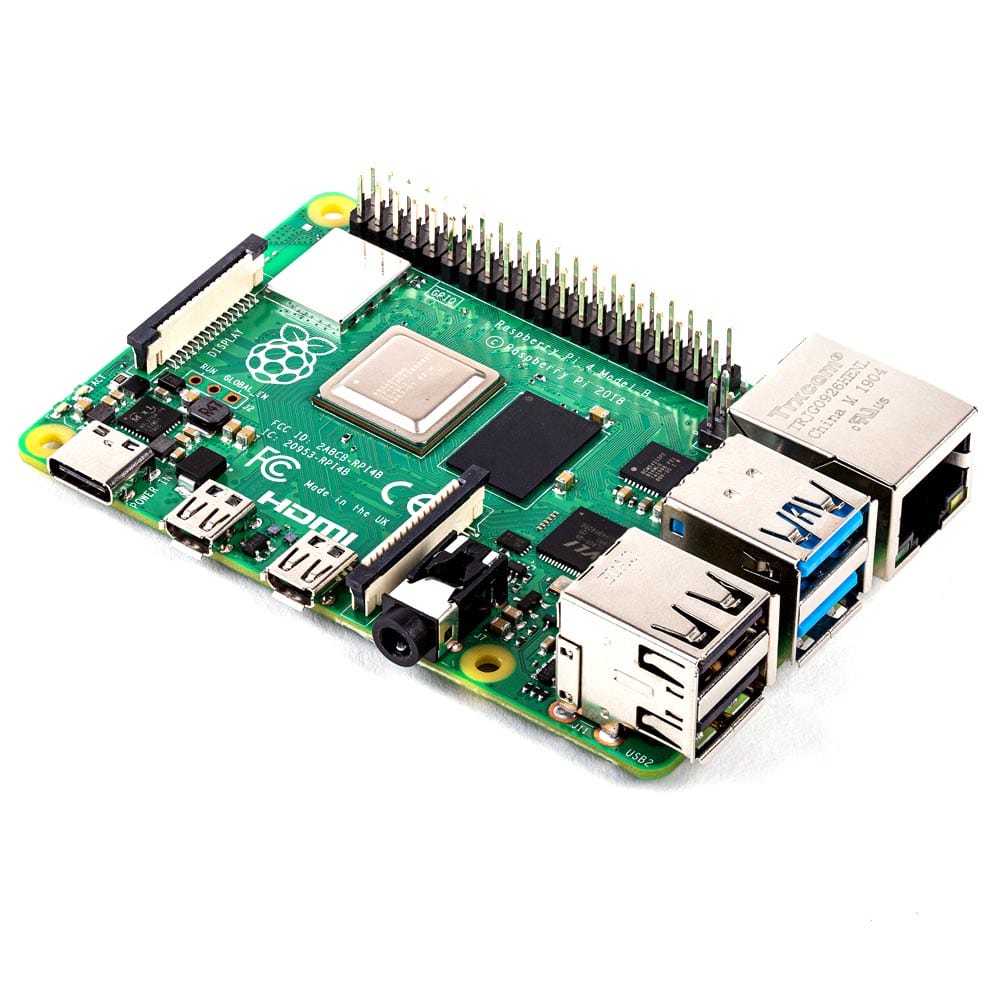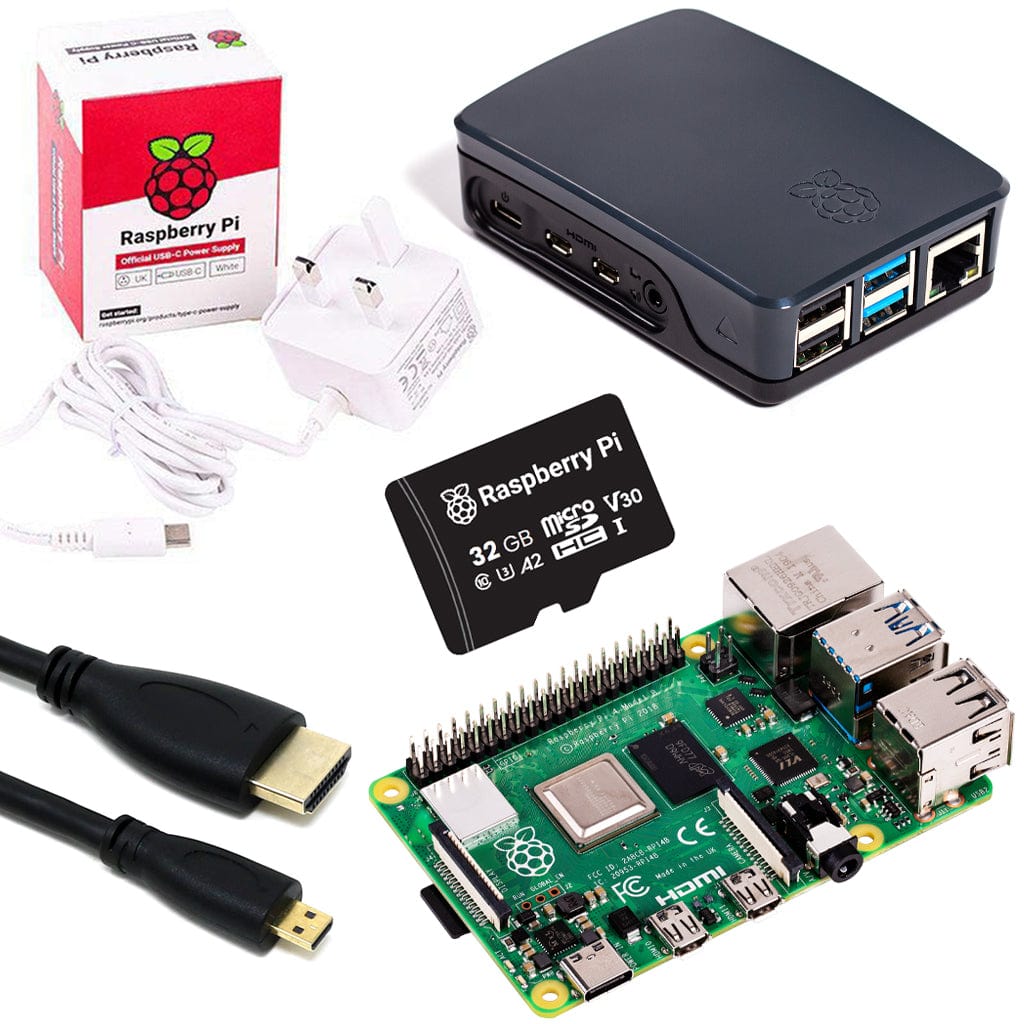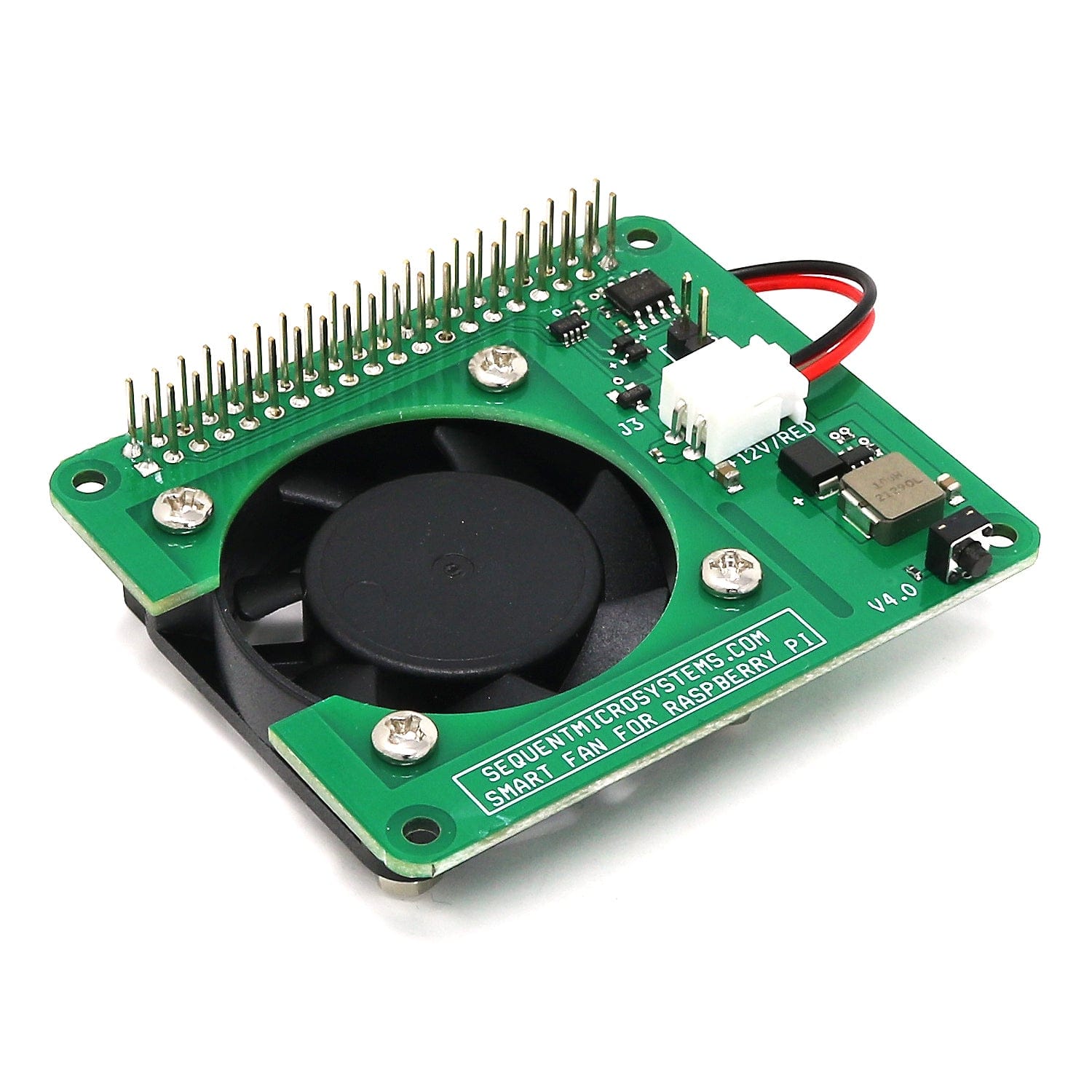
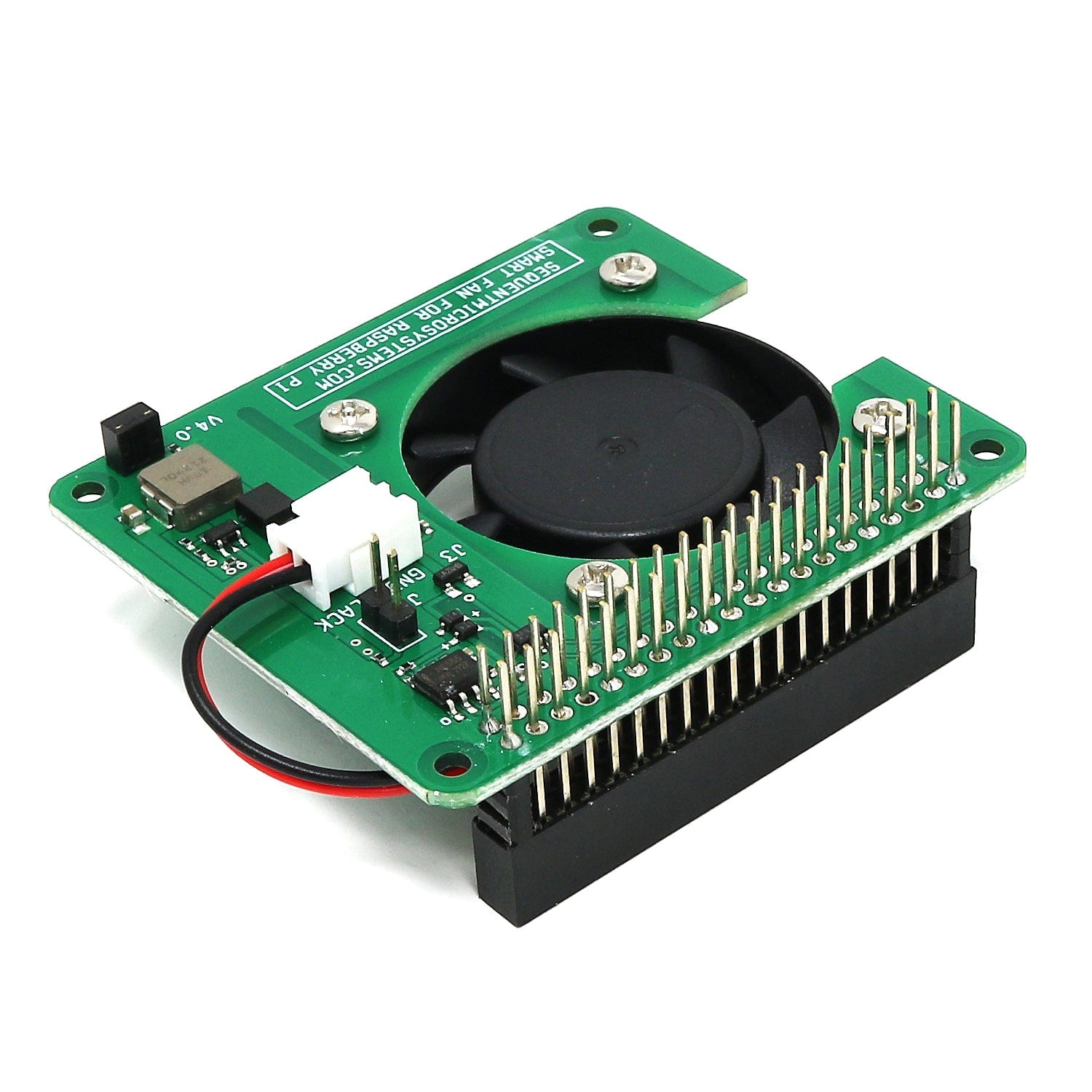
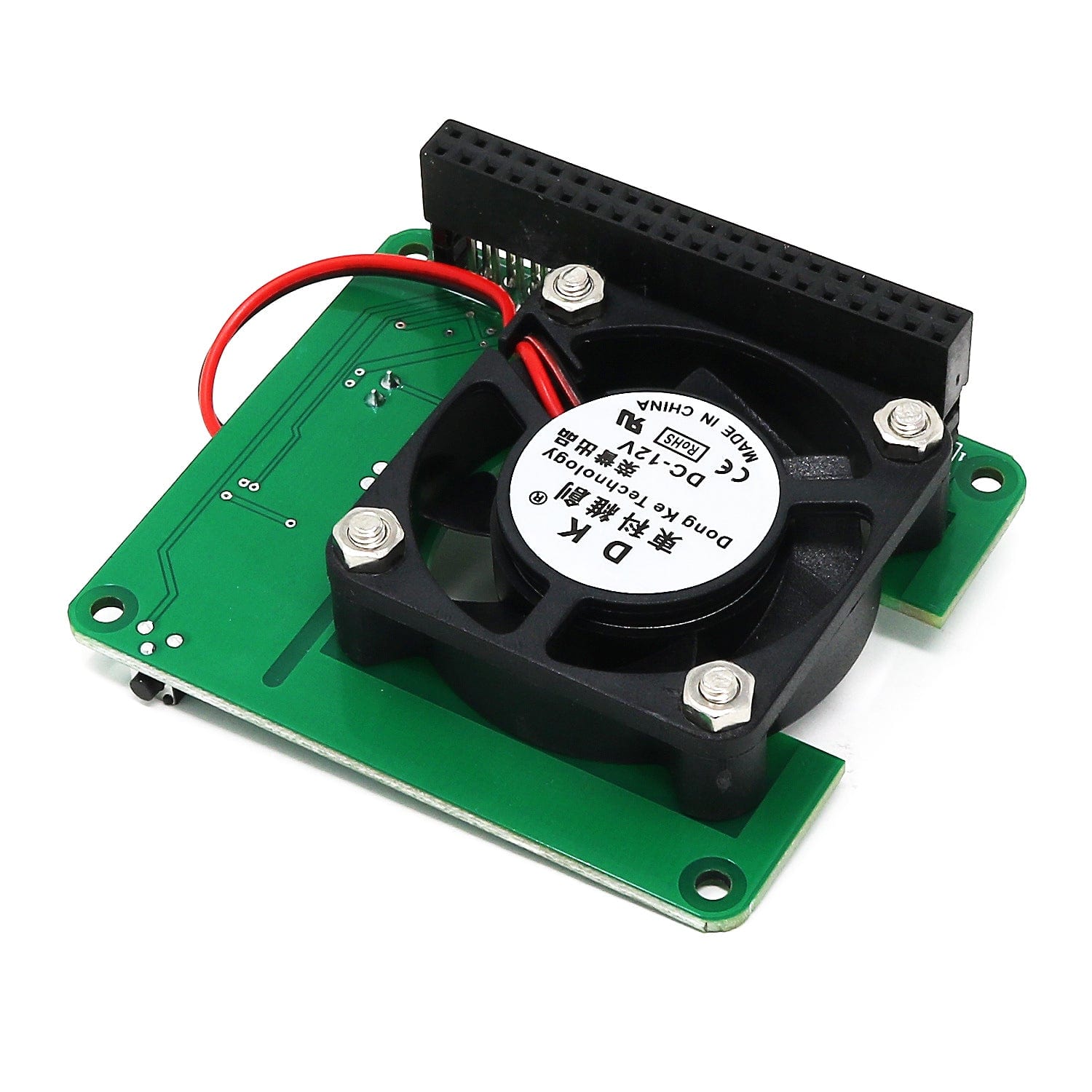

Login / Signup
Cart
Your cart is empty
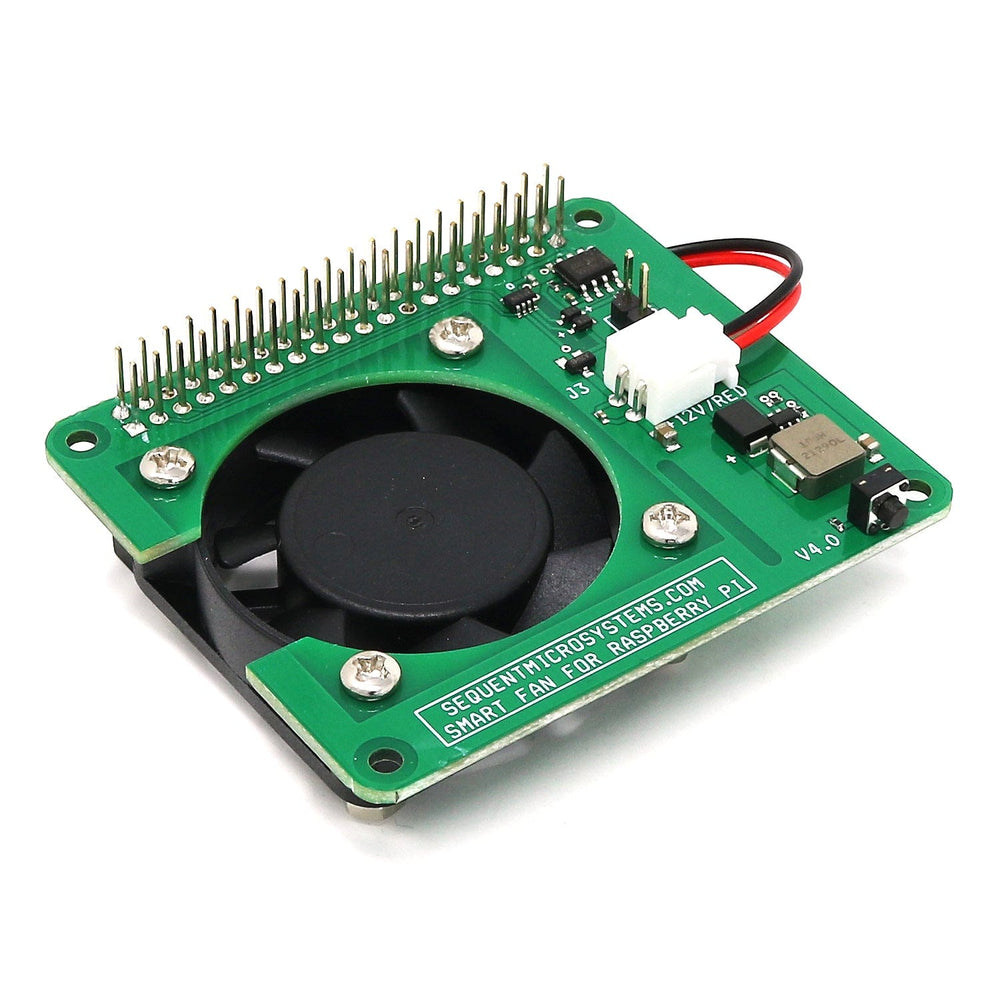
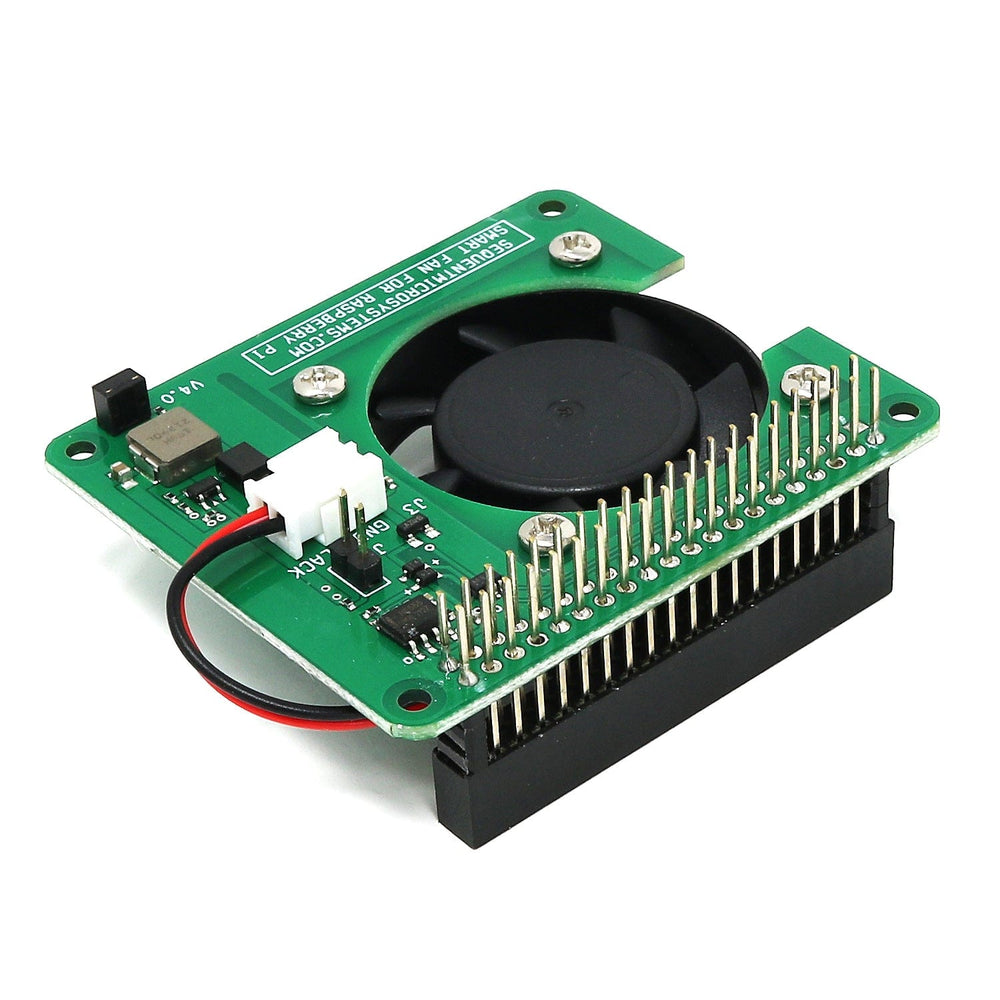
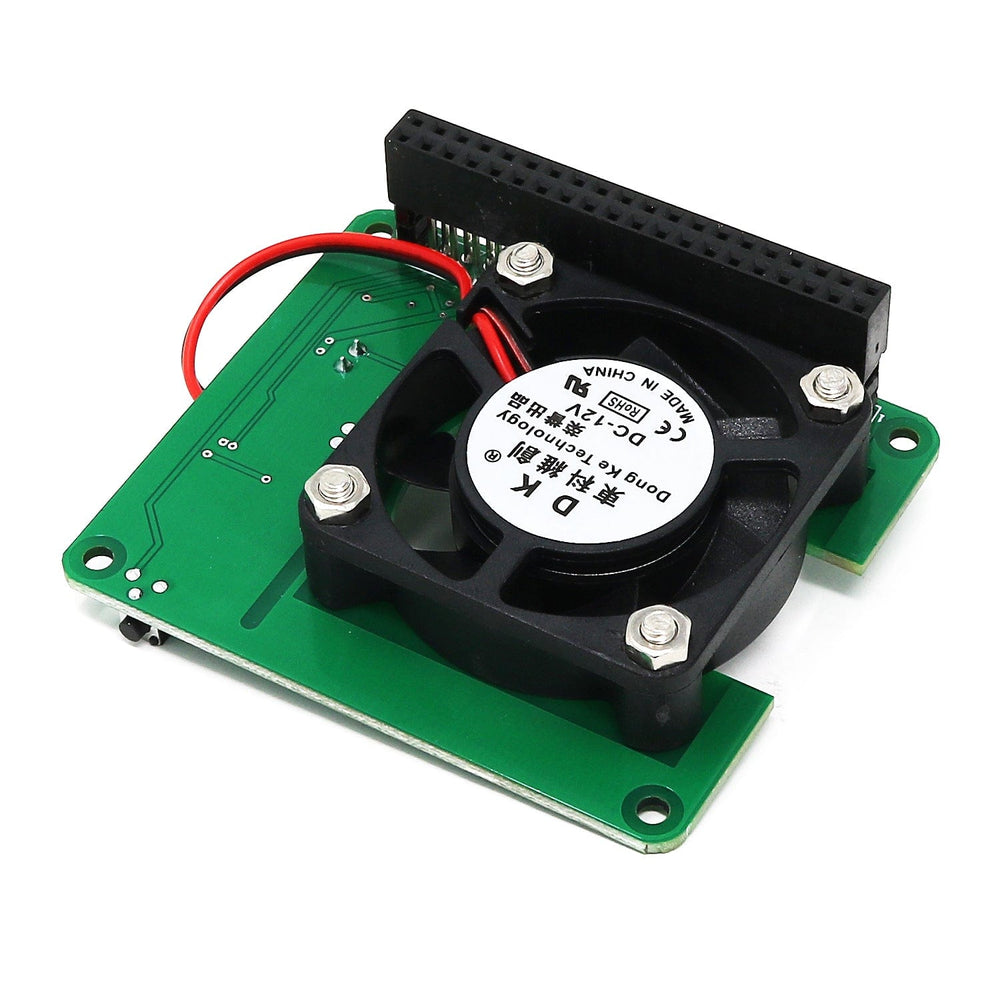

The Smart Fan HAT is an inexpensive cooling solution for your Raspberry Pi 4 with a 40mm fan and its own 32-bit processor for smart cooling.
The 32-bit processor receives commands from Raspberry Pi via the I2C interface. A step-up power supply converts the 5V provided by Raspberry Pi to 12V, ensuring precise speed control. Using pulse width modulation, it powers the fan just enough to maintain a constant temperature of the Raspberry Pi processor.
The Smart Fan preserves all the GPIO pins, allowing any number of HATs to be stacked on top of Raspberry Pi. If another add-on card has to dissipate power, a secondary Smart Fan can be added to the stack.
Two Smart Fans can be installed on top of each Raspberry Pi. The assumption is that you have one more card in the stack which requires cooling. The bottom side of the Smart Fan has a jumper which needs to be installed on the second fan, in order for the Raspberry Pi to differentiate the two I2C addresses.
The Smart Fan can be controlled from any program using simple command line or Python functions. A Node-Red interface lets you set and monitor the temperature from the browser. The software can maintain the temperature history in a log file which can be plotted in Excel, an example loop can be found here.
Since the Smart Fan is a slave to the I2C interface, Raspberry Pi must tell it what to do.
Command line and Python functions are available to control the fan speed. Raspberry Pi needs to monitor the processor temperature and control the fan speed accordingly. A PID loop sample program can be downloaded from GitHub. In case of malfunction, if the temperature exceeds a safe limit, Raspberry Pi must shut itself off to prevent burnout.
The Smart Fan has a LED controlled by the local processor. At power up, the processor powers up the fan for 1 second, so the user can make sure the system is functional.
The onboard LED shows the status of the fan. When the fan is off, the LED blinks 1 time per second. When the fan is turned on, the LED blinks between 2 to 10 times per second, proportional to the speed of the fan.
Raspberry Pi not included





